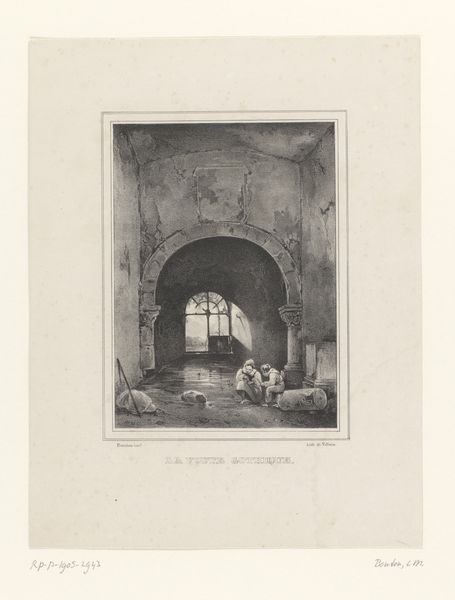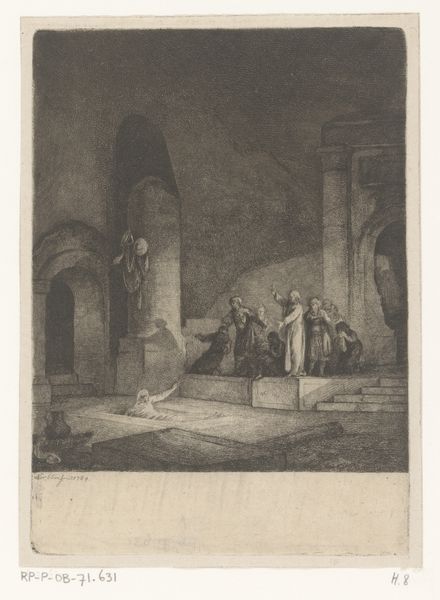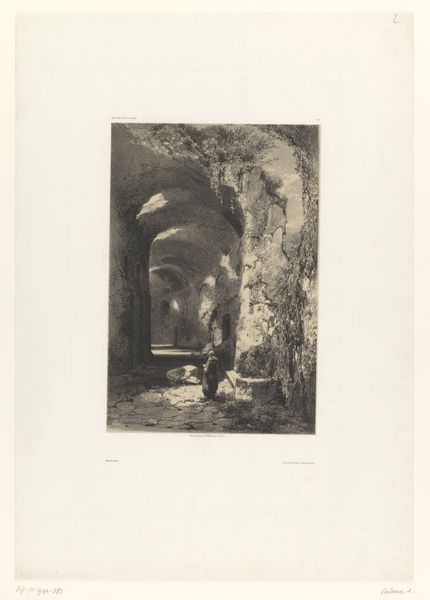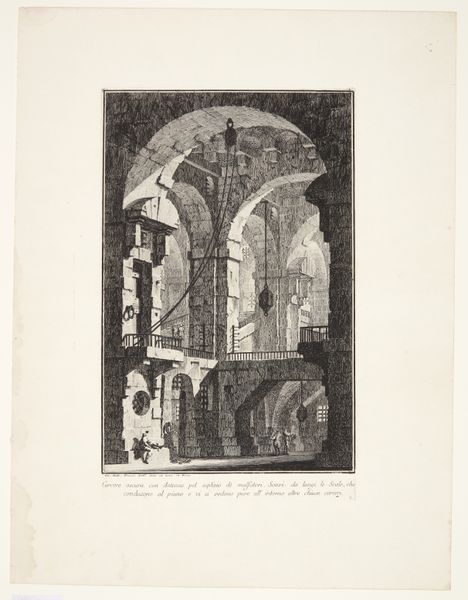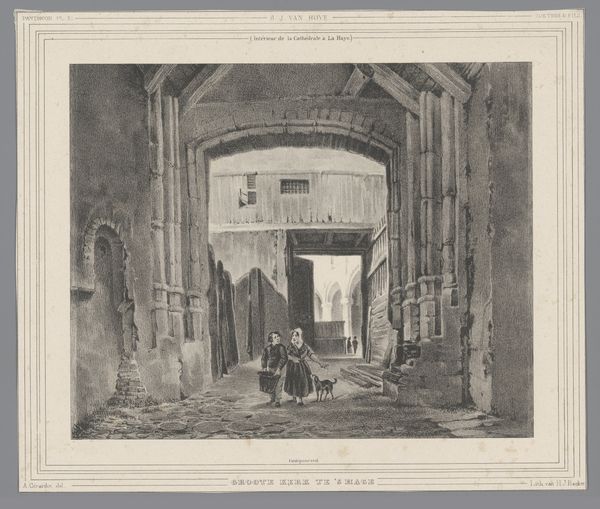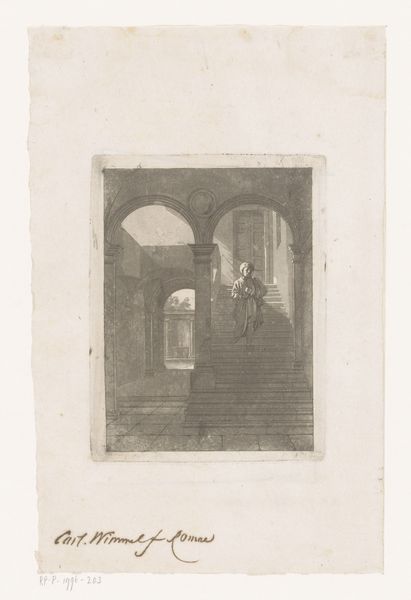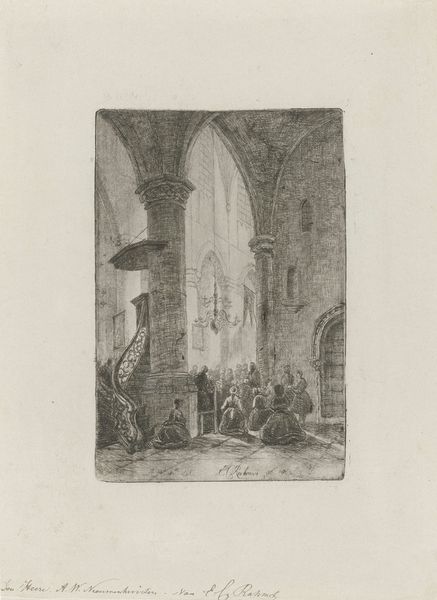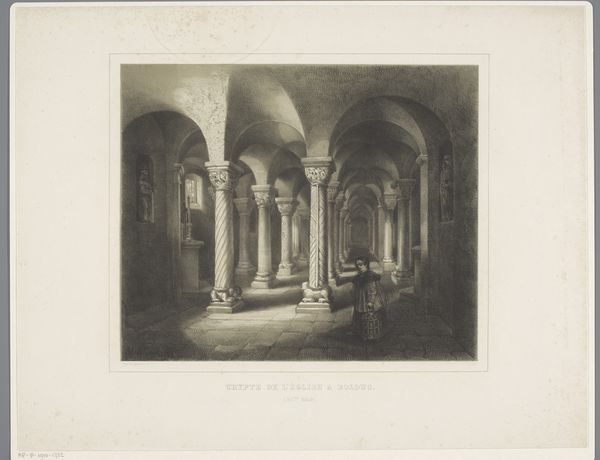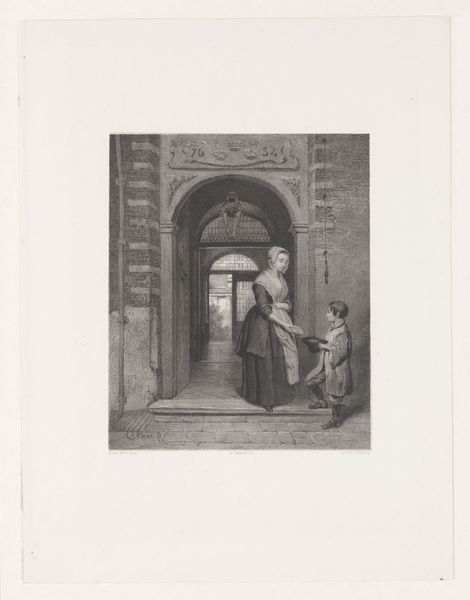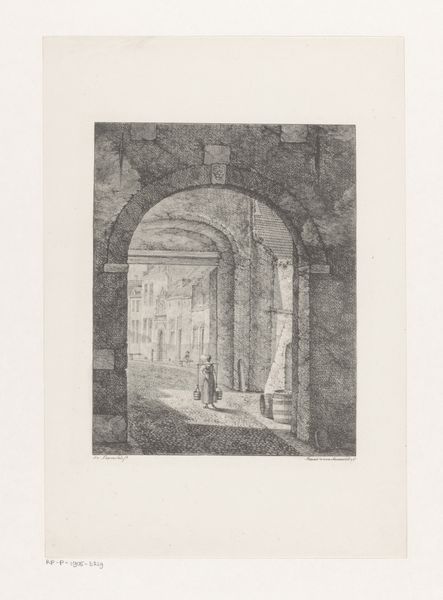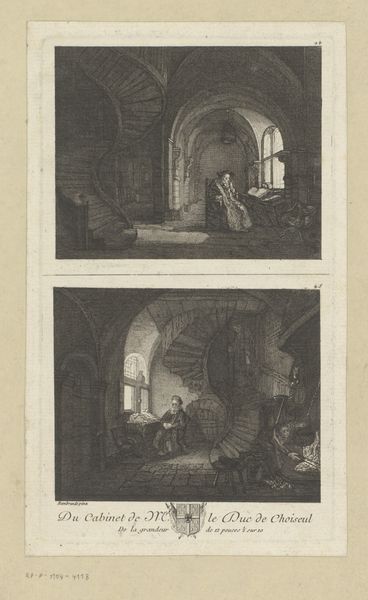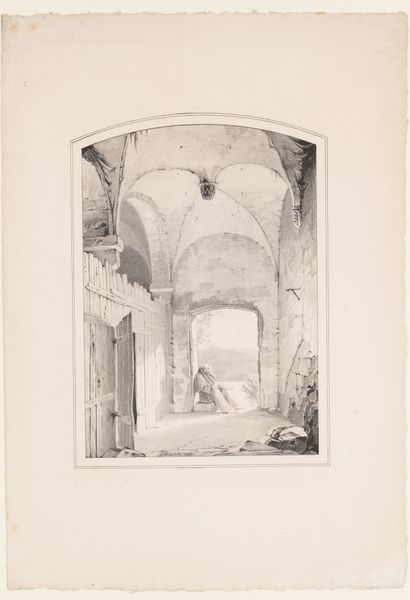
Franciscus van Paola predikt in de ruïne van een kapel 1818 - 1826
0:00
0:00
jeanbaptistearnout
Rijksmuseum
etching
#
etching
#
landscape
#
romanticism
#
history-painting
Dimensions: height 545 mm, width 362 mm
Copyright: Rijks Museum: Open Domain
Jean-Baptiste Arnout created this lithograph of Franciscus van Paola in the ruins of a chapel sometime in the 19th century. Lithography, unlike traditional printmaking techniques like etching or engraving, relies on the chemical repulsion between oil and water. A design is drawn on a smooth stone or metal plate with a greasy crayon, then the surface is treated to make the image receptive to ink and the non-image areas receptive to water. When the plate is inked, the ink adheres only to the drawn design, which is then transferred to paper under pressure. In this print, the lithographic process allows for subtle gradations of tone and texture, mimicking the appearance of a delicate pencil drawing or wash. The artist could achieve a remarkable level of detail and atmospheric effect, from the rough texture of the stone walls to the soft light filtering through the ruined chapel, thereby demonstrating the versatility of lithography as a medium for artistic expression and reproduction.
Comments
No comments
Be the first to comment and join the conversation on the ultimate creative platform.
